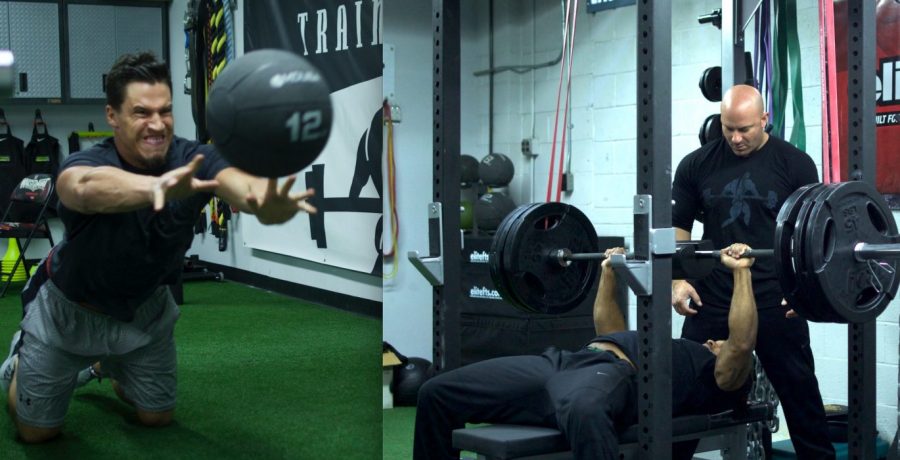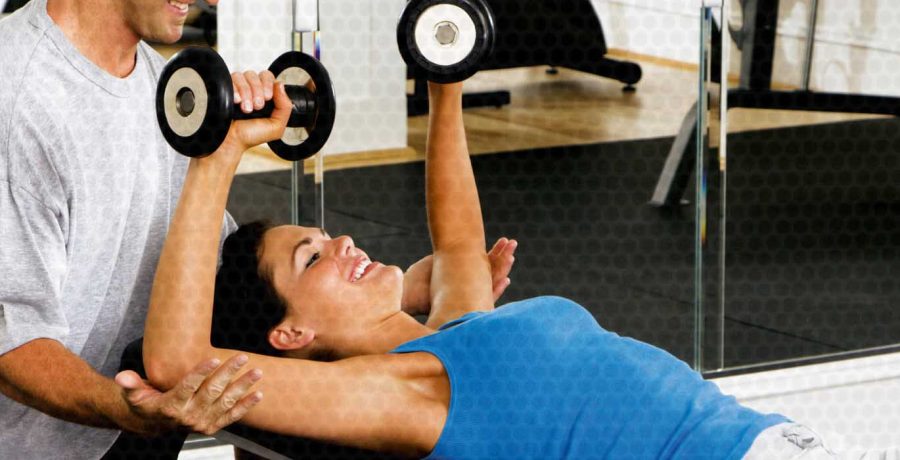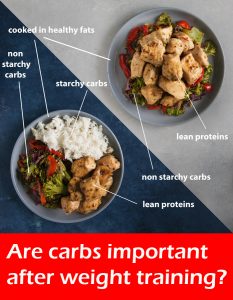Ways to increase your strength:
- Bodyweight exercises like push-ups or squats, that require nothing but your body.
- Free-weights, which requires some equipment.
- Cardio work, such as running, to improve endurance.
- Gym machines, which need a expensive equipment and are not as effective as bodyweight or free-weights equivalents.
Bodyweight Training
Bodyweight exercises are extremely convenient and effective. You don’t need any equipment or gym subscription, since you’ll be using your own body as your resistance.
Because they’re so simple, it’s easy to prevent injuries. If you’re new to strength training and still need some help with form on your exercises, bodyweight training is much more forgiving than most types of weightlifting.
Bodyweight exercises are also incredibly easy to modify to your ability level, whether you’re a recovering couch potato or world-class gymnast. They also allow you to develop better control and awareness.
You can build a great physique using nothing else but bodyweight exercises.
Free Weights
Free weight exercises are those done with dumbbells and barbells. Because they work your muscles and stabilizers, they’re great at building a strong, balanced physique.
These also help improve bone density, tendon strength and strengthen your metabolism.
Begin to see everyday movements as strength training opportunities. Every time you pick something up off the ground, you’re doing a mini-deadlift.
Specific exercises with loaded weights are ideal to strengthen muscular imbalances since it’s easier to target individual muscle groups; for this type of focus, free weights can be very efficient exercises.
If total-body workouts are more difficult for one area of your body, strengthen it with specific weighted exercises.
We’re often stronger with our dominant side, and specific, measurable reps and weights can quickly show you your relative strength per area of the body.
Weight Machines
Machines provide a specific range of motion and restrict your movements to avoid bad form. Because of this, they can be great for rehabilitation exercises. They’re also good for beginners. If you’re just getting into weightlifting, machines are a good place to start.
Machines can’t deliver the kind of full-body results you can get with bodyweight or free-weight exercises. Machines will typically isolate one muscle group, which is potentially dangerous as your strength builds up.
Once you have an observer (ideally a professional trainer) help you learn how to lift properly independent of machines, try to stop using machines your lifting engages your entire body, rather than a smaller, restricted area.
Dynamic Strength Training
Dynamic strength training is what happens in HIIT workouts, usually involving plyometrics, or quick, explosive motion.
These types of exercises engage your muscles explosively, at fairly light loads, effectively combining some plyometric concepts with the benefits of lifting weights.
Some examples include kettlebell swings and dumbbell cleans.

Weight Training Goals
We’ve covered the major weight training methods, but which one will work best for you? That depends on your goals. What is it you’re trying to accomplish most? Strength, size, or stability (endurance)?
Strength Focus
Training for strength is pretty simple. All you really need to do is focus on adding load and/or speed to an exercise. The simplest ways to do this are through bodyweight and free weight training.
No matter which type of training you choose, you will begin with light loads and slow speed.
Only increase difficulty if you can maintain proper form.
Your muscles will grow bigger as you increase the resistance, and recover properly from it through nutrition and rest.
To add load or speed
Bodyweight exercises
Load: Add static holds to your workout.
Speed: Incorporate plyometric exercises or perform movements faster once you have mastered form.
Weight Training Goals
We’ve covered the major weight training methods, but which one will work best for you? That depends on your goals. What is it you’re trying to accomplish most? Strength, size, or stability (endurance)?
Free weights
Load: Increase the weight on exercises, always keeping proper form
Speed: Perform movements faster at lighter weights
Two Sample Programs
Bodyweight Strength Training
The City Fitness Centre provides fully customized workouts that adapt to you. Here’s an example of how a typical workout could look like:
![]() Bodyweight (or pistol) Squats
Bodyweight (or pistol) Squats
3 sets of as many reps as possible
![]() Pull-ups
Pull-ups
3 sets of as many reps as possible
![]() Push-ups
Push-ups
3 sets of as many reps as possible
![]() Handstand Push-ups (or holds)
Handstand Push-ups (or holds)
3 sets of as many reps as possible
![]() Plank
Plank
3 sets of at least 20 seconds
Free Weight Strength Training: Sample Program
![]() Front Squat or Back Squat
Front Squat or Back Squat
3 sets of 5 reps
![]() Deadlift
Deadlift
3 sets of 5 reps
![]() Flat Barbell Bench Press
Flat Barbell Bench Press
3 sets of 5 reps
![]() Standing Barbell Military Press
Standing Barbell Military Press
3 sets of 5 reps
How to Train for Size
To add size, often you need to eat more calories than you burn to support the muscle growth.
You can be incredibly strong without looking “ripped”, but training is a crucial piece of the puzzle as well. Focus on adding volume over speed or load. Your ultimate goal is induce as much hypertrophy as possible, and then build that muscle back up. Because of this, free weights and machines are often most effective.
Sample routine: Build Bulk

![]() Monday: Chest, Shoulders
Monday: Chest, Shoulders
Incline Barbell or Dumbbell Bench Press
– 4 sets of 10-12 reps
Fly Machine
– 3 sets of 12-15 reps
Seated Dumbbell Military Press
– 4 sets of 10-12 reps
One Arm Cable Lateral Raise
– 3 sets of 12-15 reps
![]() Wednesday: Back, Arms
Wednesday: Back, Arms
Bent-over Barbell Rows
– 4 sets of 10-12 reps
Lat Pulldowns
– 3 sets of 12-15 reps
Cable Curls
– 3 sets of 12-15 reps
Cable Tricep Pressdowns
– 3 sets of 12-15 reps
![]() Friday: Legs, Abs
Friday: Legs, Abs
Back or Front Squats
– 4 sets of 10-12 reps
Leg Curls
– 3 sets of 12-15 reps
Calf Raises
– 4 sets of 12-15 reps
How to Train for Endurance
Weight training naturally builds strength, but it can also build muscular endurance by focusing on more volume and less load. This is where dynamic weight training shines!
Sample Endurance Workout
Complete as many rounds as possible in 5, 10, 15, or 20 minutes; go for as long as you safely can until you’re winded.
- 15 Kettlebell Swings
- 10 Kettlebell High Pulls
- 5 Kettlebell Cleans
Obstacles with Weight Training Methods
While the weight training methods we’ve presented today are certainly helpful, there are obstacles that we want you to be aware of no matter what goal you have or strategy you choose.
Bodyweight
It is difficult to increase resistance, but not impossible! You can do it by putting your body at a more disadvantageous position to increase leverag
Free weights
A gym membership or a purchase of equipment is necessary. Remember to have a sound strategy to get perfect form.
Machines
Gym membership is usually necessary for these as well, unless you are lucky enough to be able to afford them.
Dynamic
These aren’t always easy for beginners. They become especially difficult when working quickly under a time limit, and form can be an issue if you get too excited and hyperextend. Always do dynamic strength training mindfully.
Weight training does take some consideration, but it’s not rocket science. Use what you’ve learned here to kickstart your journey to better strength, size, or endurance as you like. City Fitness Centre is here for you, and we’ll continue to create customized plans to help you achieve specific goals.





